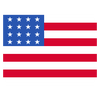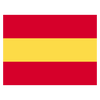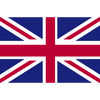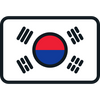Waiting Out
With pools opening and races being rescheduled, there is a temptation to dive back into the swim training you had in March. However, before you reach for the cap and goggles consider what you have been doing over the last 4-5 months.
Where is your mobility and fitness with respect to swimming? Maybe you were consistently doing dryland training and addressing your cardiovascular fitness with some other form of aerobic exercises such as running or cycling. If this is the case you’re likely ready to resume swimming at similar levels to where you left off in March. If you are lacking the mobility and fitness you had in March, these will need to be addressed before resuming full levels of training.
How to Do It:
Trying to regain all of your fitness through one activity you’ve been dormant in for the past 3-4 months will take much longer than integrating other forms of exercise and allowing adaptations to occur with your swim specific muscles. Cycling for 30-45 minutes instead of slogging out another 2-3k on tired arms will not only improve your overall fitness but help speed recovery from the quality swim training you can do. Addressing mobility issues will require a more thoughtful approach but you can begin by simply noticing how your muscles feel before, during, and after your swims.
RAD has a suite of videos and an app that will help you address any number of mobility issues and you can work through many of your issues by making use of these resources. However, there are always a few obvious places every swimmer can work on but often they don’t due to lack of time or energy but with an initial reduction in swim volume there will be more time and energy available before and after sessions to work on mobility.
Guided Practice:
With the right plan, swimming less will actually result in a quicker return to swim fitness. Part of that plan will involve no more than 10 min of active warm-up and recovery. 2-3 min shower, 3-5 min of bands, and 3-5 minutes of rolling. Band work can include any movement that brings your arms, shoulders, back, and core into the movements you'll be performing in the pool.
This can include bringing the band from above your head to the hip or internal and external rotations. The resistance is light and easily controlled so you can experiment with movements and focus on good form. Doing the exercises in front of a mirror can help you find the correct positioning of the arms.


(Pictured Bands From Crossover Symmetry)
As far as rolling, the top 3 movements are:
- Use the RAD Roller or Helix, starting at the lower back and working up the spine, holding light pressure for 2-3 seconds on the spots that feel restricted. Remember that less is more, meaning less pressure often yields more results. Remember - Myofascial release should never be painful! (See photo below)
- Use the Rod and Helix, rolling the sides of the neck, arms and rib cage, breathing deeply through the ribs and abdomen to further mobilize the muscles and fascia. Improving your breathing now will allow for easier breathing during the session. If you swim with someone this is a great activity to share with them, taking turns rolling the Rod and Helix along these hard to hit areas.
- Use the RAD Roller, placing on the front the shoulder between the chest and shoulder muscles. The aim is to open up the chest and create more range of motion in the shoulders.

Check for Understanding:
With the body feeling warm and loose, put on the swim parka and keep warm as you walk to the pool. A common mistake swimmers make is doing their dryland routine and then standing around on the cold swim deck and letting their muscles tighten up. A good swim parka or large towel can help keep the body warm until the final moment when you dive in.

Once you’re swimming, give yourself at least 10-15 minutes time to warm up. Even if you don’t normally warm-up, doing so while you’re still returning to swim training is a good idea. Integrating various strokes and drills can also help loosen up but again, keep the effort very easy. Once you’re feeling good begin the main set and have a friend film your stroke at the beginning and end of the set. Use this video to identify where you might have mobility and technique issues so you can refine your warm-up routine to address these issues. For example, if you're unable to get a strong catch you might need to integrate mobility work into the upper traps and shoulders. Seeing yourself makes it easier to identify issues that you weren’t aware of.


After the main set, make sure to do another 5-10 min of easy swimming. Take a hot shower then revisit the same rolling and band routine and note any areas you feel particularly restricted or fatigued in.
Independent Practice:
You can make the best use of your swim session by integrating a good warm-up that includes a shower, bands, and mobility work with video feedback.
As you’re able to take on more volume and intensity, it'll still be important to continue integrating the warm-up, feedback, and recovery. You’ll find a routine that serves you best instead of continually chasing new issues caused by poor habits picked up through overuse or lack of focus.
- Dan McIntosh, Professional Triathlete & RAD Co-Founder
Check out RAD's collection of tools for runners and cyclist here



















